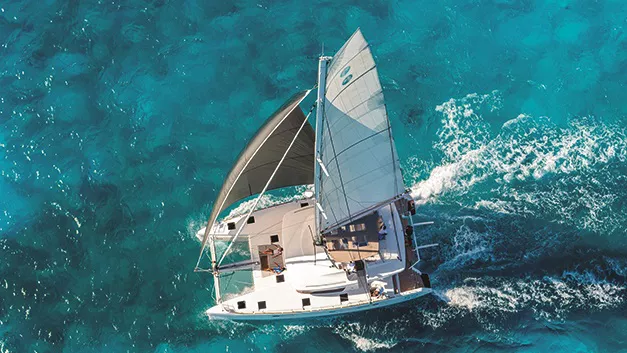Sailing offers a unique blend of adventure, relaxation, and a deep connection with nature. Among the various types of sailing vessels, catamarans have gained popularity due to their distinctive design and performance characteristics. A common question among both novice and experienced sailors is: Is sailing a catamaran difficult? This article delves into the nuances of catamaran sailing, exploring their advantages, challenges, and how they compare to traditional monohull sailboats.
Is Sailing a Catamaran Difficult?
Before assessing the difficulty of sailing a catamaran, it’s essential to understand their unique design features. A catamaran is a type of boat featuring two parallel hulls of equal size. This design offers several benefits:
- Stability: The twin-hull configuration provides enhanced stability, reducing the likelihood of capsizing and minimizing heeling (the tilting of the boat to one side).
- Space: Catamarans typically offer more deck and living space, making them popular for cruising and accommodating larger groups.
- Speed: The design allows for reduced water resistance, often resulting in faster speeds compared to monohulls.
Advantages of Sailing a Catamaran
1. Stability and Comfort
One of the most lauded features of catamarans is their stability. The wide beam and twin hulls make them less susceptible to heeling, providing a more comfortable experience, especially in rough seas. This stability also makes them appealing to beginners who might be apprehensive about the dynamics of sailing.
2. Ease of Maneuverability
Catamarans are known for their agility. Their design allows for responsive handling, making maneuvers like tacking (turning the bow through the wind) and gybing (turning the stern through the wind) more straightforward. However, due to their wider beam, these maneuvers may require more coordination compared to monohulls.
3. Performance in Various Conditions
Catamarans often excel in downwind sailing, maintaining speed and stability. Their design allows them to ride smoothly over waves, providing a comfortable journey even in less-than-ideal conditions.
4. Shallow Draft and Access to Exclusive Anchorages
Catamarans typically have a shallow draft, enabling them to access shallow waters and anchorages that may be inaccessible to deeper-drafted monohulls. This feature opens up a wider range of cruising grounds and secluded anchorages, enhancing the overall sailing experience.
5. Level Sailing and Reduced Fatigue
Catamarans sail relatively level, with minimal heeling, resulting in increased comfort and reduced fatigue for the crew. This level sailing allows for activities like cooking, reading, and repairs to be performed with greater ease and less discomfort.
6. Enhanced Safety Features
Catamarans are designed with positive buoyancy, meaning they are less likely to sink if damaged. Additionally, their stable platform reduces the risk of crew members being thrown overboard, enhancing overall safety during voyages.
Challenges of Sailing a Catamaran
1. Upwind Sailing Limitations
While catamarans perform admirably downwind, they face challenges when sailing upwind. Their design doesn’t allow them to sail as close to the wind as monohulls. This means they might need to take a longer route to reach an upwind destination.
2. Sensitivity to Wind and Weight Distribution
Catamarans are more sensitive to wind changes due to their larger sail area and lighter weight. Sudden gusts can have a more pronounced effect, requiring sailors to be vigilant and responsive. Additionally, proper weight distribution is crucial to maintain balance and prevent the windward hull from lifting out of the water, which can lead to loss of control.
3. Docking and Mooring Considerations
The wide beam of catamarans, while beneficial for stability, can pose challenges when docking or mooring. Finding suitable berths that can accommodate their width may be more difficult, and marina fees can be higher due to the increased space occupied.
4. Limited Performance in Certain Wind Conditions
Catamarans may experience reduced performance in certain wind conditions, particularly when sailing upwind in heavy winds. Their design may require adjustments in sail trim and course to maintain optimal speed and control.
Learning Curve for Catamaran Sailing
For those new to sailing, catamarans can be both forgiving and demanding. The stability and space make them appealing, but understanding their unique handling characteristics is essential. It’s advisable to undergo formal sailing training and spend time learning the ropes under the guidance of experienced sailors. Practical experience will help in mastering maneuvers and understanding the nuances of catamaran behavior in various wind and sea conditions.
Conclusion
Sailing a catamaran offers a unique and rewarding experience. While there are challenges, especially concerning upwind performance and docking, the advantages—such as stability, speed, and space—often outweigh them. With proper training, practice, and an understanding of their design characteristics, sailors can navigate these challenges and fully enjoy the pleasures of catamaran sailing.

